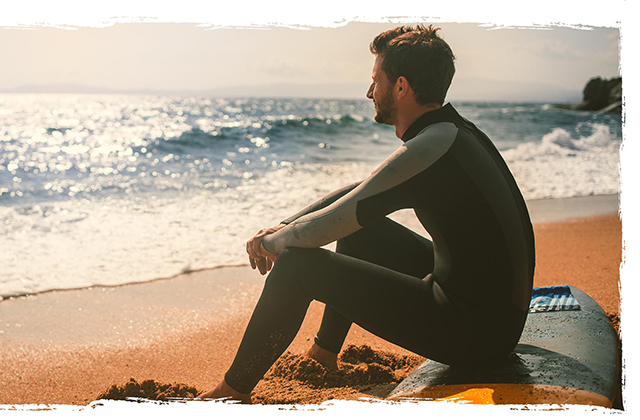Although there is no solid written or recorded history of the first surfers it is widely accepted that the sport has it roots in the Pacific Ocean. The fact is that Hawaii is surfing’s hub and it was the Hawaiians who mastered the art of standing on boards about 1000 years ago. Read on to find out more about the origins and history of this incredible sport… Enter the surf contest, no matter your skill level or experience.
Although there is no solid written or recorded history of the first surfers it is widely accepted that the sport has it roots in the Pacific Ocean. Despite the claims of some Peruvians who say that surfing was started by their fishermen 4000 years ago the popular theory on the origins of the Polynesian population suggests that it was during the colonization of the Pacific Islands such as Indonesia, Fiji, Tahiti and eventually Hawaii that surfing began. The fact is that Hawaii is surfing’s hub and it was the Hawaiians who mastered the art of standing on boards about 1000 years ago. Hawaii’s kings would show off their skill and prowess to their subjects. Kings would use large 18-25 ft long ‘olo’ balsa boards while the rest of the population used smaller ‘alaia’ boards.
It was Captain James Cook’s expedition which bought surfing to the western world in 1779 when the writings of his Lieutenant James King were published. The accounts talked about Hawaii and the pastimes and beach lifestyle of the locals. Soon after, in 1821, Europeans began to use Hawaii as a trading post and the British arrived to impose their religion and ideologies. These missionaries decided that as surfing was often a precursor to fornication is was not right or proper and banned it completely. This almost wiped out the pastime completely and had it not been for some die-hard surfers and curious tourists it may have died out all together.
The surfing culture was bought back to popularity by two men, George Freeth and Duke Kahanamoku, two Waikiki beach boys. Freeth was made famous by an article written in 1907 by American writer Jack London who was fascinated by the sport. The article was published in the US mainland and Freeth became a minor celebrity. Freeth then moved to America and demonstrated his surf skills in California where he was billed ‘the man who can walk on water’. Kahanamoku was a gold medal winning Olympic swimmer in the 1912 Stockholm games for the US and a Hawaiian ambassador. He traveled the world spreading the Aloha spirit and introduced surfing to such countries as Australia and New Zealand. In 1917 Duke managed to ride a Waikiki beach wave for over a mile on his 16ft solid red wood board. Duke’s companion Tom Blake was the first man to ride Malibu in 1926 and organized and won the first Pacific coast surf championships.
As mentioned, early boards were simple wooden planks which were heavy and finless and difficult to control in larger waves. In 1930 Tom Blake developed the hollow board which was rib-supported balsa, dowels, waterproof glue and varnish. These were lighter and more buoyant but still difficult to control. Board design changed in 1937 when local haole teenagers cut a V into the tail to help hold the wave more effectively and allowed surfers to ride bigger waves. After WW2 California became the surf board design centre and manufacturers like Bob Simmons, Dale Velzy and Joe Quigg developed boards coated in fiberglass resin and with a rear stabilizing fin.
The early surf pioneers of the early 20th century were responsible for grabbing the public’s attention and growing interest in the sport. These men explored and mapped the reefs of Oahu and pushed the envelope of possibility and the development of the equipment. These North shore surfers showed no fear and became legends in their own right.
As the sport progressed surfers wanted to find and surf bigger and better waves than those found around Waikiki and headed to the Makaha valley where waves could reach 20ft. One man called George Downing studied the break and waves around this area with scientific enthusiasm, he timed and noted times between waves, the number of waves in a set and the time between sets, the changes in swell and the profile of the reefs. He then designed a new big wave board and a local photographer took a picture of him and two other surfers riding 15ft waves at Makaha. This picture caused a sensation in the US mainland and featured in Newspapers, life and National Geographic among others. After this a semi-permanent camp was set up at Makaha by Californian and Hawaiian surfers but Downing remained the original and best big wave surfer.
Makaha was often prone to long flat periods which led surfers to explore the North shore, this area had huge swells and viscous rips that made many surfers consider it too dangerous. Especially after surfer Dickie Cross was lost at sea when he could get back to shore through the whitewater in 1943. This was until 1957 when Greg Noll and Mike Stange stood on Weimea beach watching the swell and decided to give it a go. They were followed by Fred Van Dyke, Mickey Munoz and Pat Curren but Noll claimed the first wave and became recognized as the first to ride the bay. Ever since the North shore has become surfing’s epicenter and Waimea its spiritual home.
Steve Batchelor is a Extreme Sports enthusiast and the webmaster at www.extremesportguides.com [http://www.extremesportguides.com/] where you can find some great information on many different extreme sports. He also recommends infogoldmine [http://www.infogoldmine.info/] for more info on extreme sports as well as many other subjects.
Article Source: http://EzineArticles.com/expert/Steve_Batchelor/129408
Article Source: http://EzineArticles.com/800774
